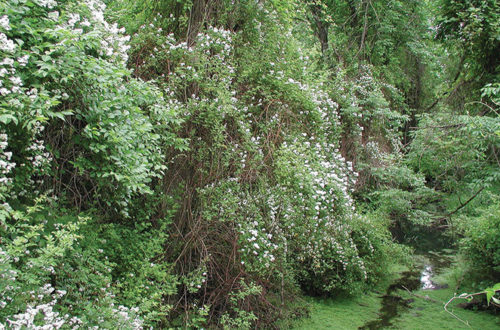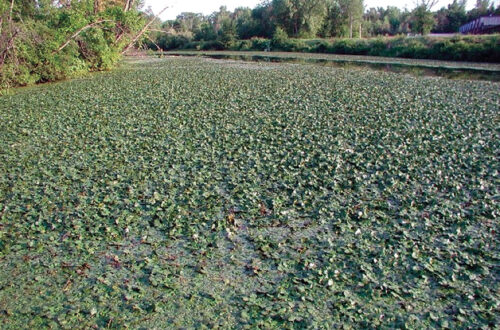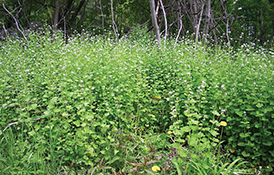The Connecticut Agricultural Experiment Station (CAES) in cooperation with USDA APHIS Plant Protection and Quarantine (PPQ) continued to detect expanding populations of the spotted lanternfly (SLF) in Connecticut through 2023. The Director of CAES hereby announces the renewal of the Order of Quarantine for SLF that was established July 1, 2021, effective January 1, 2024. More information about SLF, the quarantine order and state quarantine requirements can be found at: https://portal.ct.gov/CAES-SLF
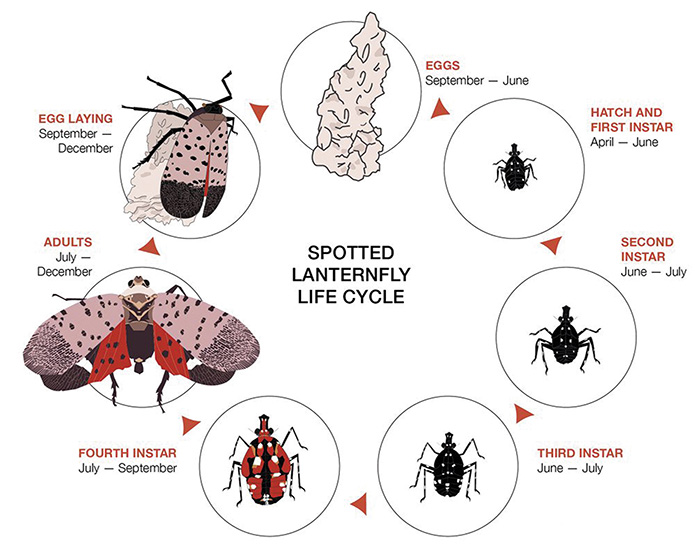
The life cycle of the spotted lanternfly.
In 2020 through 2023, multiple adult SLF populations were detected in Fairfield, Hartford, Litchfield, Middlesex, New Haven, and New London Counties. The distribution of this insect continues to expand, posing a threat to the agriculture and forests of Connecticut, hence the renewal and expansion of the quarantine noted in the original order. Early detection is important, and the public is urged to report potential sightings of this invasive pest when they become active again in 2024. Currently, the insect is overwintering in egg masses. If you suspect you have found a SLF, snap a picture of it, collect it if possible, and report it here: https://bit.ly/42gDBTv
Companies moving regulated articles from the State of Connecticut should enter into a compliance agreement to help mitigate movement of this pest, to prevent the spread of the insect and to protect our trading partners.
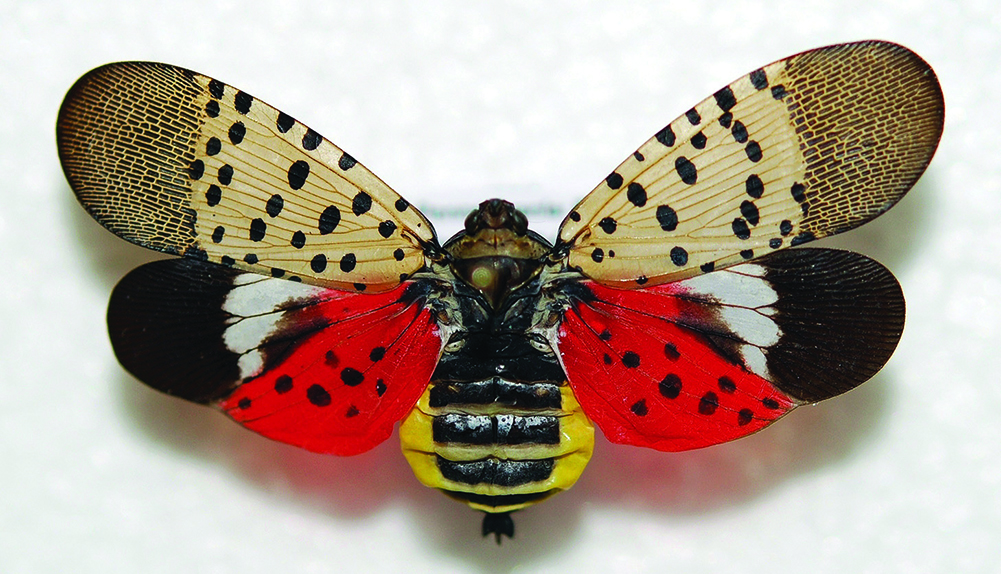
When flying, or if startled, the adult displays hind wings that include a bright red area with black spots.
Native to China, India, and Vietnam, the spotted lanternfly is an invasive sap-feeding planthopper that was discovered in Pennsylvania in 2014. SLF infestations have been reported in Connecticut, Delaware, Illinois, Indiana, Kentucky, Maryland, Massachusetts, Michigan, New Jersey, New York, North Carolina, Ohio, Pennsylvania, Rhode Island, Tennessee, Virginia, and West Virginia. The nymphal stage of this insect will soon be active with adults appearing late summer. In the fall, adults about 1 inch long can often be found congregating on tree-of-heaven (Ailanthus), willows and other trees. They will lay egg masses on trees and almost any nearby surface like rocks, decks, houses, outdoor equipment, and furniture, etc.
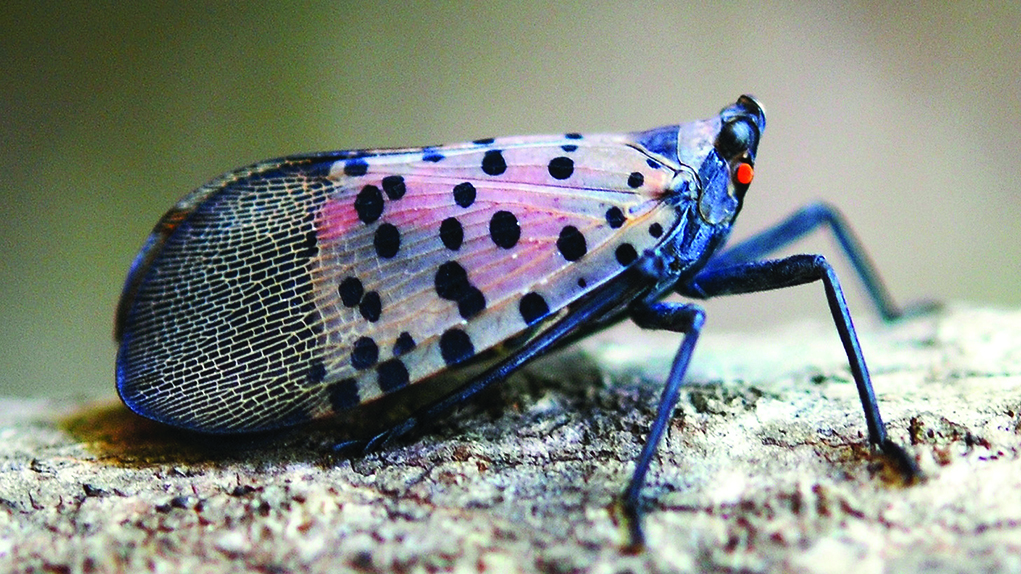
Adult on Tree-of-Heaven (Ailanthus altissima).
Nymphs of SLF will hatch from the eggs in the spring (late April-June). This insect attacks many hosts and has the potential to severely impact Connecticut’s farm crops, particularly apples, grapes, and hops, and several tree species. The secretion of excess sap called honeydew can also be a nuisance for residential infestations. Additional information is available at https://bit.ly/4baYbJh and https://bit.ly/3OgeP0h


